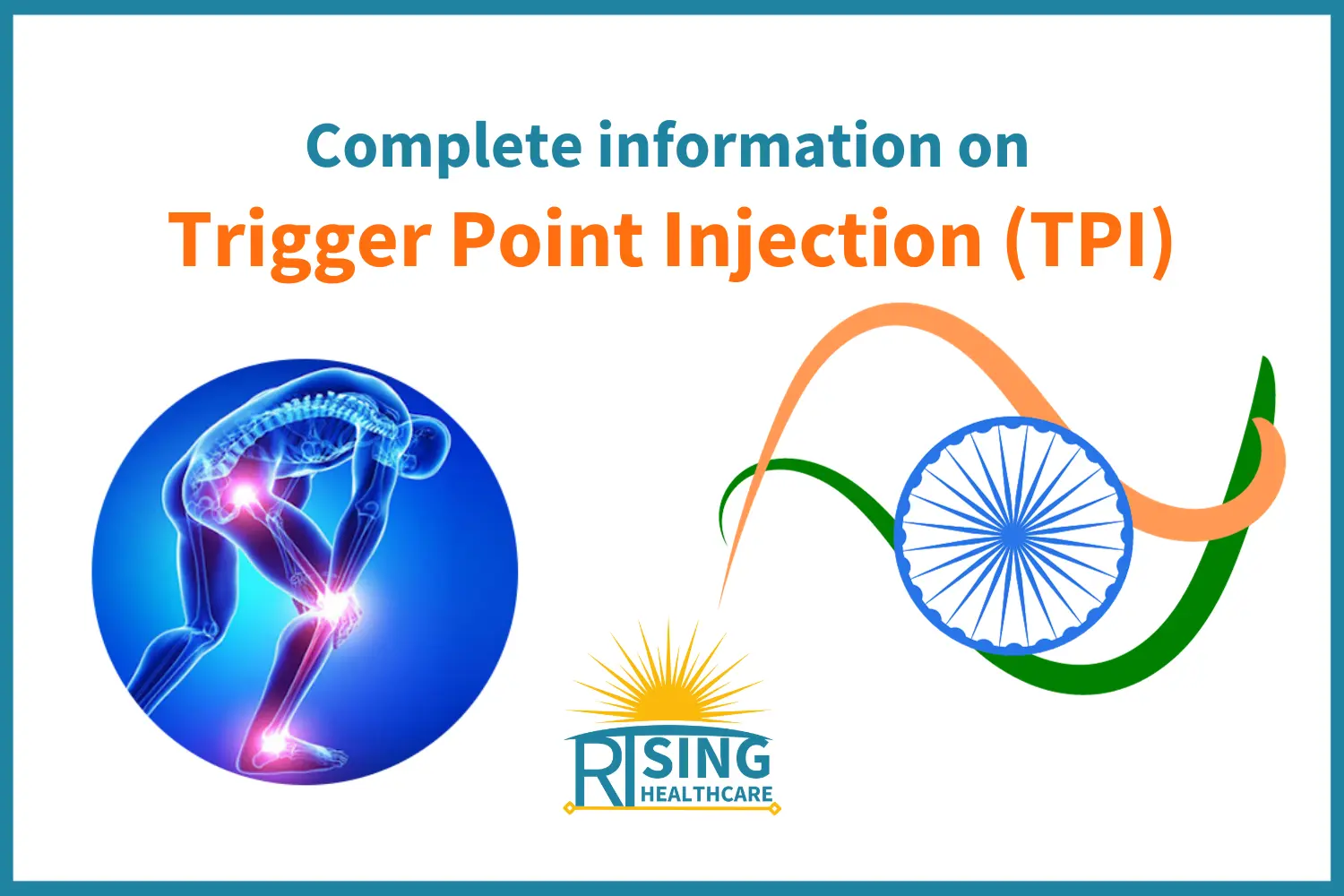
Exploring Trigger Point Injection (TPI) for Effective Pain Management
Introduction
Living with chronic pain can be debilitating and affect every aspect of a person’s life. Whether it’s due to muscle knots, tension, or underlying medical conditions, finding relief is a top priority. Trigger Point Injection (TPI) is a medical procedure that has gained popularity in recent years as an effective way to manage and alleviate pain. In this article, we’ll delve into the world of TPI in simple language, focusing on its benefits, procedure, and specifically, lumbar TPI, while targeting keywords such as “TPI injection,” “TPI pain management,” and “lumbar TPI.”
Understanding Knee Replacement Surgery
Before we dive into TPI, it’s crucial to understand what trigger points are. Trigger points are highly sensitive areas within your muscles. They are often referred to as “knots” and can be painful when pressed. These points can develop due to various factors, such as muscle overuse, injury, stress, or medical conditions like fibromyalgia. When trigger points form, they can cause localized pain or refer pain to other parts of the body, making diagnosis and treatment a bit tricky.
What is TPI?
Trigger Point Injection (TPI) is a medical procedure designed to alleviate pain caused by trigger points. It involves the injection of medication directly into these knots to relieve muscle pain and discomfort. TPI is commonly used to treat musculoskeletal conditions and can provide quick and effective pain relief. It is considered a minimally invasive procedure and is often used when other conservative treatments like physical therapy and pain medications have not provided adequate relief.
The Benefits of TPI Injection
- Pain Relief: The primary benefit of TPI is pain relief. By directly targeting the source of pain, which is the trigger point, TPI can provide rapid relief from muscle-related discomfort.
- Improved Functionality: Pain can limit your range of motion and hinder daily activities. TPI can help restore functionality by reducing pain and muscle tension.
- Minimally Invasive: TPI is a relatively simple and minimally invasive procedure that doesn’t require surgery or prolonged recovery times.
- Customized Treatment: TPI allows for a customized treatment approach. The medication used in the injection can be tailored to the specific needs of the patient and their condition.
- Reduced Medication Dependency: For those who have been relying on pain medications, TPI can offer an alternative that reduces the need for long-term medication use.
The TPI Procedure
- The TPI procedure is typically performed by a trained healthcare provider, often an experienced physician. Here’s what you can expect during a TPI session:
- Patient Evaluation: The process begins with a thorough evaluation of your medical history and a physical examination. Your healthcare provider will identify the trigger points causing your pain.
- Preparation: After identifying the trigger points, your healthcare provider will clean the area with an antiseptic to reduce the risk of infection.
- Injection: A fine needle is then inserted into the trigger point, and the medication is injected. The medication used in TPI injections can vary and may include local anesthetics, steroids, or other substances that help reduce pain and inflammation.
- Post-Injection Care: After the injection, your healthcare provider may apply a bandage to the injection site. You may be advised to rest for a short period and avoid strenuous activities for a day or two.
- Follow-Up: Follow-up appointments may be scheduled to monitor your progress and determine if additional injections are necessary.
Lumbar TPI: Targeting Lower Back Pain
Lumbar TPI specifically targets trigger points in the lower back area, which is a common source of chronic pain for many individuals. Conditions such as sciatica, herniated discs, or muscle strains in the lumbar region can benefit from this procedure.
Key points about lumbar TPI:
- Sciatica Relief: Lumbar TPI can be particularly effective for relieving sciatic pain, which is often caused by compression or irritation of the sciatic nerve in the lower back.
- Muscle Spasms: Trigger points in the lumbar region can lead to painful muscle spasms. TPI can help relax these muscles and reduce spasms.
- Improved Mobility: By targeting trigger points in the lower back, lumbar TPI can enhance your ability to move and perform daily activities without pain.
- Complementary to Other Treatments: Lumbar TPI can be used in conjunction with other treatments like physical therapy to provide comprehensive pain management.
Key points about lumbar TPI:
- Sciatica Relief: Lumbar TPI can be particularly effective for relieving sciatic pain, which is often caused by compression or irritation of the sciatic nerve in the lower back.
- Muscle Spasms: Trigger points in the lumbar region can lead to painful muscle spasms. TPI can help relax these muscles and reduce spasms.
- Improved Mobility: By targeting trigger points in the lower back, lumbar TPI can enhance your ability to move and perform daily activities without pain.
- Complementary to Other Treatments: Lumbar TPI can be used in conjunction with other treatments like physical therapy to provide comprehensive pain management.
TPI Pain Management: What to Expect
- When considering TPI for pain management, it’s important to have realistic expectations. Here’s what you can expect from TPI in terms of pain management:
- Quick Relief: Many individuals experience immediate pain relief following a TPI injection. However, the duration of pain relief can vary from person to person.
- Temporary Relief: TPI is not a permanent solution. While it can provide relief from acute or chronic pain, the effects may wear off over time. Repeat injections may be necessary for long-term management.
- Improved Quality of Life: TPI can significantly improve your quality of life by reducing pain and allowing you to engage in daily activities more comfortably.
- Personalized Approach: TPI is tailored to your specific pain and trigger points, ensuring a customized treatment plan that addresses your unique needs.
- Minimal Side Effects: TPI is generally well-tolerated with minimal side effects. Some individuals may experience temporary soreness or bruising at the injection site.
Is TPI Right for You?
- TPI can be an effective option for pain management, but it may not be suitable for everyone. Your healthcare provider will consider several factors before recommending TPI, including:
- Diagnosis: TPI is most effective for pain caused by trigger points. Your healthcare provider will assess whether your pain is likely to be relieved by this procedure.
- Overall Health: Your general health and any underlying medical conditions will be taken into account to determine if TPI is a safe option for you.
- Allergies: If you have allergies to any of the medications used in TPI, alternatives will be considered.
- Medications: Your current medications will be reviewed to ensure there are no potential interactions with the medications used in TPI.
- Expectations: It’s essential to have realistic expectations about the results of TPI. Your healthcare provider will discuss what you can realistically expect in terms of pain relief and duration.
Conclusion
Trigger Point Injection (TPI) is a valuable tool in the field of pain management, offering relief for those suffering from muscle-related pain and discomfort. Whether you’re considering TPI for general pain management or specifically for lumbar pain, it’s crucial to consult with a healthcare provider who can assess your unique needs and determine if TPI is an appropriate option for you. With its ability to provide quick relief, improve functionality, and enhance your overall quality of life, TPI has become a trusted choice for individuals seeking relief from chronic pain caused by trigger points.

